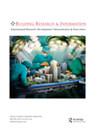Sustainable supplier selection for prefabricated megaprojects during COVID-19: a novel large group decision-making model
IF 3.7
3区 工程技术
Q1 CONSTRUCTION & BUILDING TECHNOLOGY
引用次数: 0
Abstract
ABSTRACT Prefabrication in construction has broad development prospects owing to its sustainability and strong support from the government. Prefabricated components, as the primary part of prefabrication megaprojects, affect the project completion and performance directly. Therefore, selecting appropriate prefabricated component sustainable suppliers (PCSSs) is a paramount task for the success of prefabricated megaprojects. This study expounds on the characteristics of PCSS selection from three aspects, namely the difference between prefabricated and traditional ones, sustainability requirements, and the impact of COVID-19, and indicates the issues that should be considered when choosing PCSS. An evaluation criterion is extracted and applied to the primary data from 4 PCSSs and 45 decision makers (DMs) of a prefabricated megaproject. Finally, a novel intuitionistic fuzzy large-group decision-making model is proposed. This model considers criterion weights and DM weights, as well as hesitation, ambiguity and consistency. The results indicate that the proposed model has strong robustness and can meet the decision-making needs of different DMs. The model extends the body of knowledge in the context of supply chain disruptions and digital bidding during the COVID-19 pandemic based on its more comprehensive criteria for the PCSS selection and new approaches for the weighting and uncertain evaluation throughout the decision-making process.新冠肺炎期间装配式大型项目的可持续供应商选择:一个新的大型群体决策模型
摘要建筑预制具有可持续性和政府的大力支持,具有广阔的发展前景。预制构件作为大型预制工程的主要组成部分,直接影响着工程的竣工和性能。因此,选择合适的预制组件可持续供应商是预制大型项目成功的首要任务。本研究从预制和传统PCSS的区别、可持续性要求和新冠肺炎的影响三个方面阐述了PCSS选择的特点,并指出了选择PCSS时应考虑的问题。从一个预制大项目的4个PCS和45个决策者(DM)的原始数据中提取并应用了一个评估标准。最后,提出了一种新的直觉模糊大群体决策模型。该模型考虑了标准权重和DM权重,以及犹豫、模糊和一致性。结果表明,该模型具有较强的鲁棒性,能够满足不同DM的决策需求。该模型基于更全面的PCSS选择标准和在整个决策过程中进行加权和不确定评估的新方法,扩展了新冠肺炎大流行期间供应链中断和数字投标背景下的知识体系。
本文章由计算机程序翻译,如有差异,请以英文原文为准。
求助全文
约1分钟内获得全文
求助全文
来源期刊

Building Research and Information
工程技术-结构与建筑技术
CiteScore
8.60
自引率
7.70%
发文量
43
审稿时长
>12 weeks
期刊介绍:
BUILDING RESEARCH & INFORMATION (BRI) is a leading international refereed journal focussed on buildings and their supporting systems. Unique to BRI is a focus on a holistic, transdisciplinary approach to buildings and the complexity of issues involving the built environment with other systems over the course of their life: planning, briefing, design, construction, occupation and use, property exchange and evaluation, maintenance, alteration and end of life. Published articles provide conceptual and evidence-based approaches which reflect the complexity and linkages between cultural, environmental, economic, social, organisational, quality of life, health, well-being, design and engineering of the built environment.
 求助内容:
求助内容: 应助结果提醒方式:
应助结果提醒方式:


